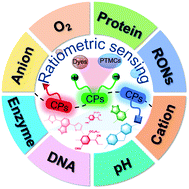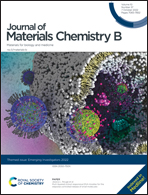Conjugated polymer-based luminescent probes for ratiometric detection of biomolecules
Abstract
Accurate monitoring of the biomolecular changes in biological and physiological environments is of great significance for the pathogenesis, development, diagnosis and treatment of diseases. Compared with traditional luminescent probes on the basis of an intensity-dependent single-channel readout, ratiometric fluorescence detection is a more reliable sensing or imaging method which can monitor different emission signals in two or more channels with a built-in self-calibration functionality, attracting growing attention in biomolecule detection. As a kind of luminescent material with many prospects, conjugated polymers with an easily functionalized organic molecular structure, high brightness, superior stability, tunable emission, and superior biocompatibility have been widely adopted as ratiometric fluorescent probes in biosensing and bioimaging. This review first summarizes the design principles of luminescent conjugated polymers that have been developed as methods for the ratiometric measurement of biomolecules. Additionally, their potential in accurate biodetection of living biosystems was investigated. This paper aims to provide a comprehensive review of the existing challenges and latest advancements in ratiometric detection of various biomolecules with high selectivity and sensitivity. We sincerely expect that the information presented in this review could inspire broader interests across various disciplines and stimulate more exciting achievements in biodetection for the benefit of biomedical research.

- This article is part of the themed collections: Journal of Materials Chemistry B Emerging Investigators and Journal of Materials Chemistry B Recent Review Articles


 Please wait while we load your content...
Please wait while we load your content...